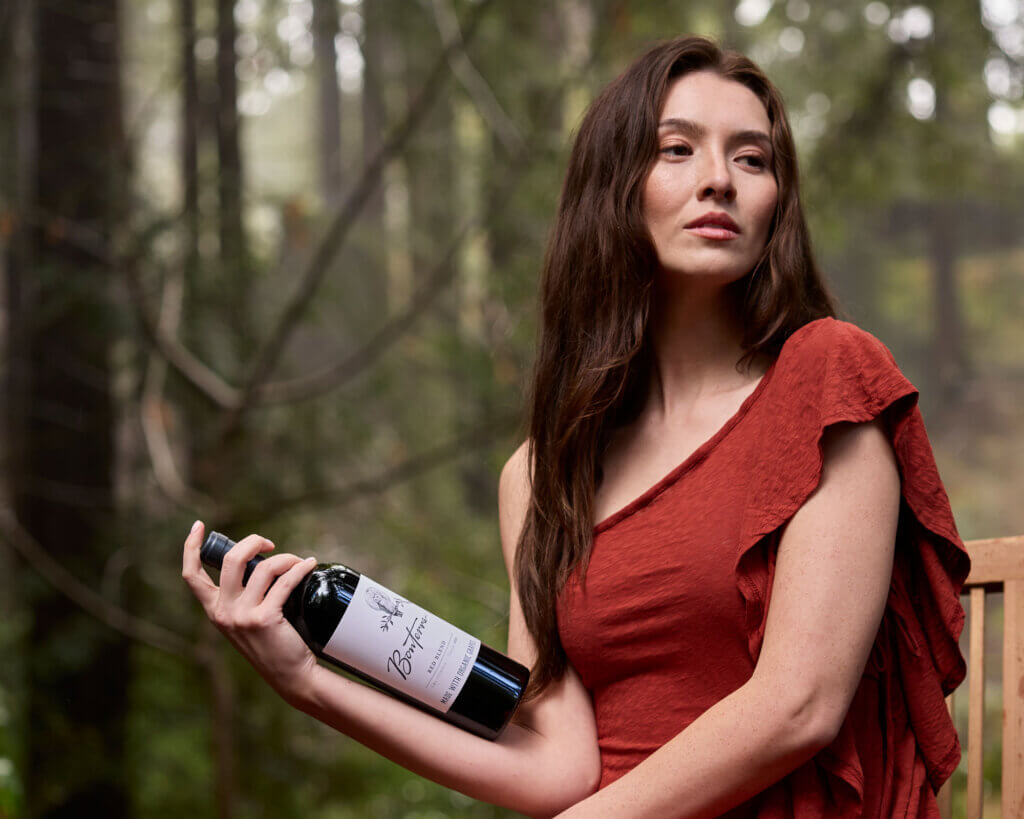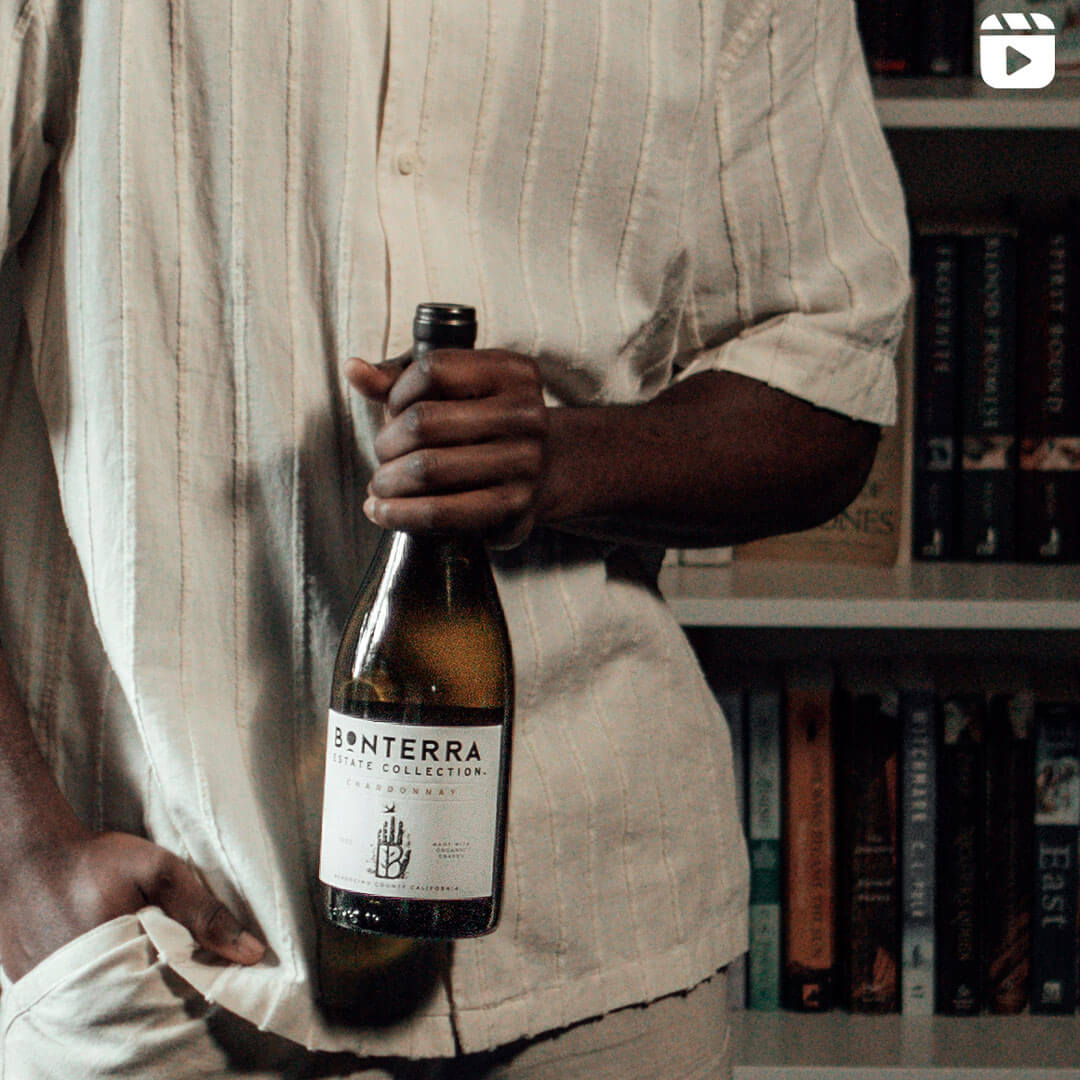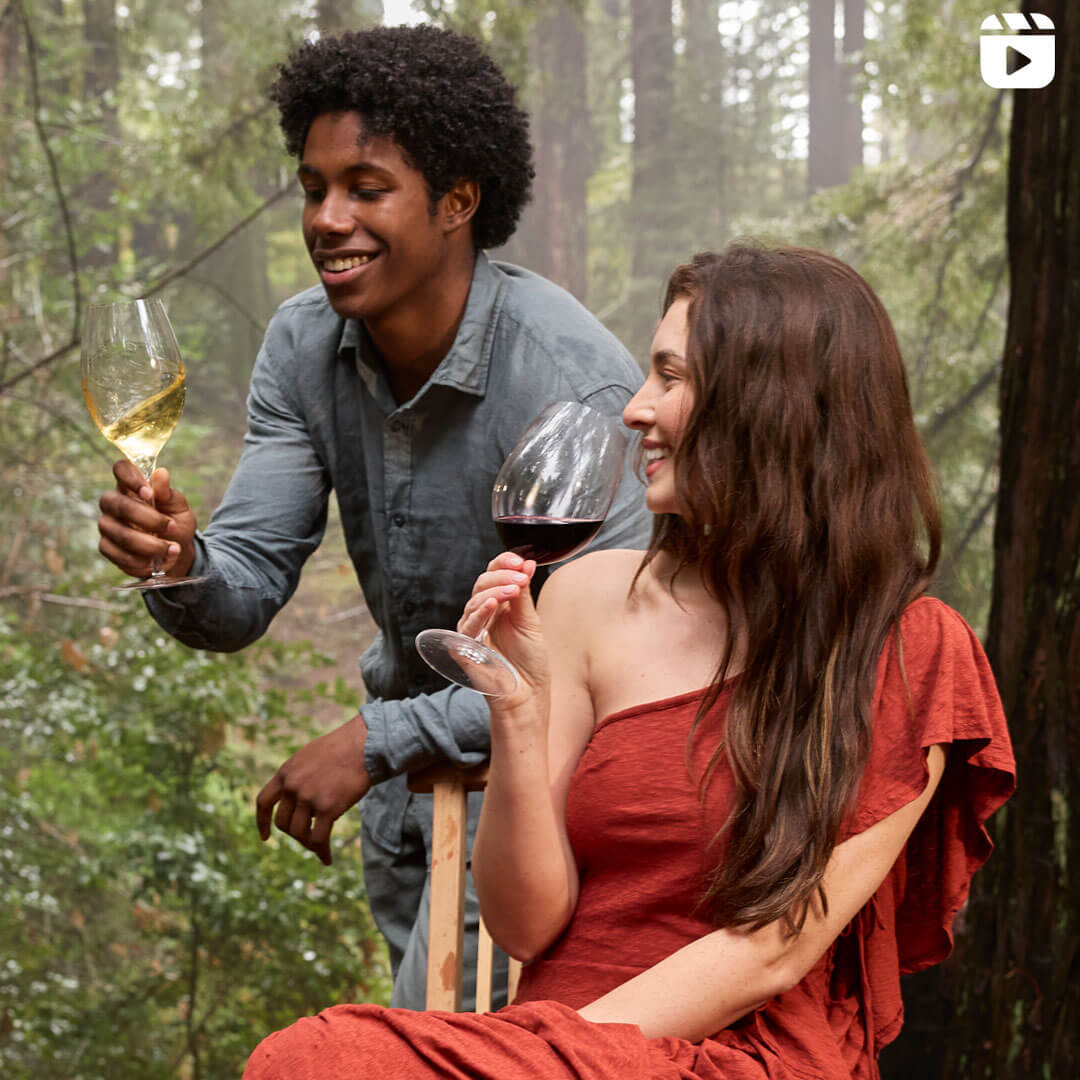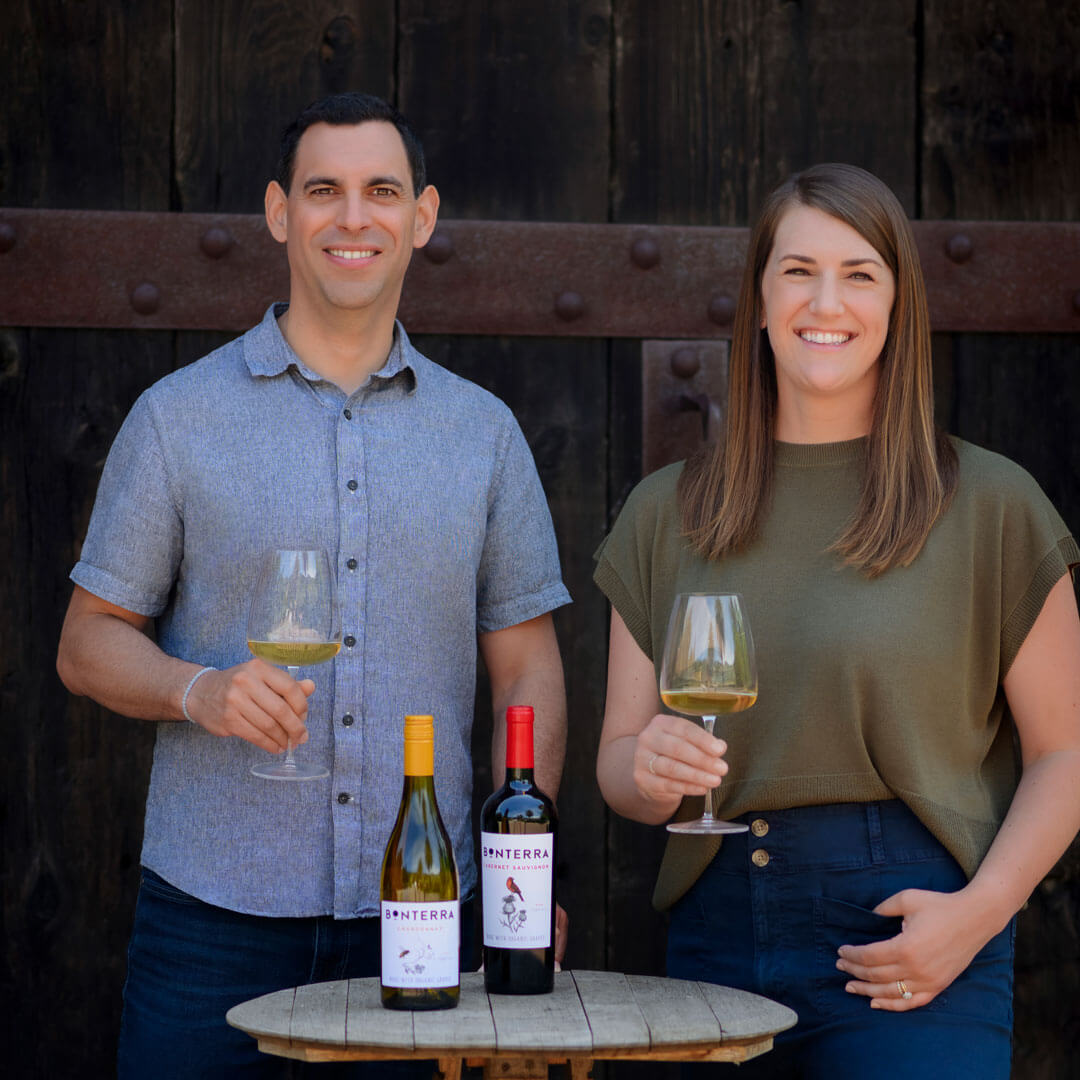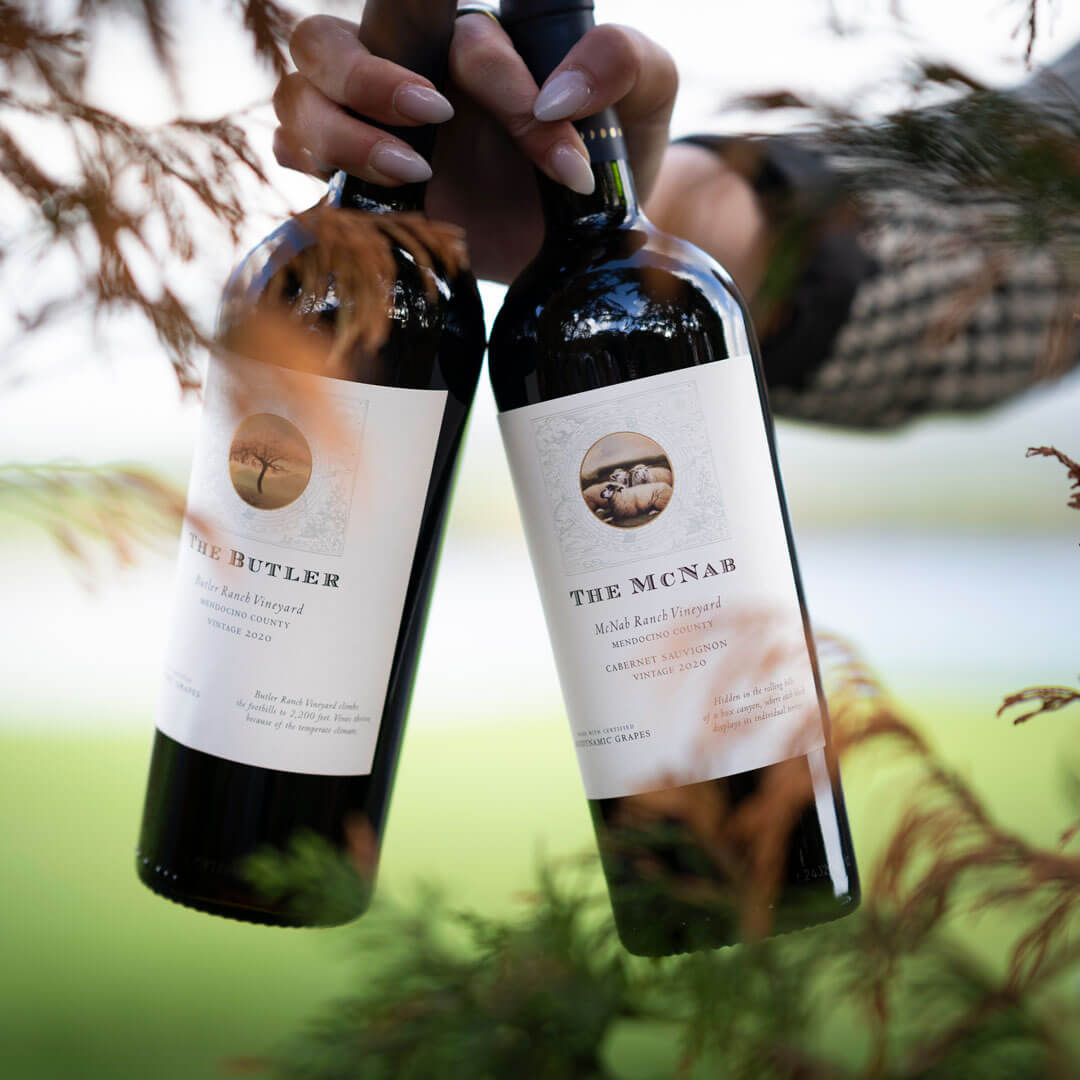At Bonterra, we believe wine blending is more than a technical process—it’s an art form that transforms individual components into a unified expression of balance, complexity, and terroir. Each wine blend tells a story of our organic winery and vineyards, where sustainable practices nurture grapes with distinct character. By carefully combining these elements, we create wines that are not only versatile and approachable but also profoundly expressive of their origins.
Here’s a closer look at the artistry behind wine blending and how it enhances the sensory experience, offering wine lovers a deeper appreciation for this timeless practice.
What Is a Wine Blend?
At its core, a red blend wine is the combination of two or more grape varieties—or sometimes different vineyard lots or vintages—to create a harmonious whole that is greater than the sum of its parts. Blending allows winemakers to enhance complexity, balance flavors, and craft wines with distinct personalities. For example, blending Cabernet Sauvignon with Merlot can soften tannins and add lush fruit notes, while integrating Syrah into a Grenache-based wine can bring structure and spice. For wine lovers, blends offer an exciting opportunity to explore layered flavor profiles that showcase the interplay between varietals.
How Winemakers Perfect the Art of Wine Blending
Creating a wine blend is both an intricate science and an expressive art form. The process begins long before the actual blending takes place—it starts in the vineyard. Winemakers carefully monitor each grape variety as it ripens, considering how its characteristics—acidity, tannin structure, aromatic intensity—might complement others.
Once harvest is complete and fermentation is finished, individual lots are tasted and evaluated for their unique qualities. This is where the artistry and creativity of the winemaker meets precision and craft. Winemakers experiment with different combinations in small-scale trials, adjusting proportions to achieve the balance and flavor profiles they desire.
For instance, at Bonterra, crafting The Butler, one of our celebrated single-vineyard red blends, involves numerous tasting sessions to ensure that each varietal contributes something essential—whether it’s the dark fruit intensity of Syrah or or the earthy complexity of Mourvèdre. The goal is not just to create a wine that tastes good but one that tells a story of its terroir and reflects our organic, regenerative farming principles.
Blending also requires foresight. Winemakers must anticipate how the wine will evolve over time—how secondary and tertiary aromas will develop during aging—and craft blends that will remain balanced as they mature in barrel or bottle.
Global Blending Traditions in Wine: Exploring Regional Techniques
Wine blending is a universal language spoken fluently in vineyards across the globe. Each region has its own traditions, shaped by centuries of winemaking heritage, terroir, and cultural preferences. From the Rhône Valley to Rioja, blending is a practice that reflects not only technical mastery but also the soul of a place. At Bonterra, we honor these global traditions while crafting blends that remain true to our California roots and organic philosophy.
The Rhône Valley: The Art of GSM
The Rhône Valley in Southern France is home to one of the most iconic wine blends: GSM, a combination of Grenache, Syrah, and Mourvèdre. This trio captures the rugged elegance of the region, with Grenache providing ripe red fruit and warmth, Syrah contributing structure and spice, and Mourvèdre adding earthy depth and tannic backbone. Together, they create wines that are both powerful and balanced, reflecting the sun-drenched vineyards and rocky soils of the Rhône.
Rioja: Spain’s Signature Blends
In Spain’s northerly Rioja region, blending is an art form perfected over generations. Tempranillo serves as the backbone of Rioja wines, known for its vibrant red fruit and elegant tannins. Winemakers often blend it with Garnacha (Grenache), which adds juiciness and spice, or Mazuelo (Carignan), which contributes acidity and structure. These blends are aged in oak barrels for extended periods, allowing tertiary aromas like leather, tobacco, and dried herbs to develop. The result is a wine that marries freshness with complexity—a hallmark of Spanish winemaking tradition.
Bordeaux: The Benchmark for Blends
No discussion of wine blending would be complete without mentioning Bordeaux. This French region set the global standard for blending with its classic combination of Cabernet Sauvignon, Merlot, Cabernet Franc, Petit Verdot, and Malbec. Each varietal plays a specific role: Cabernet Sauvignon provides structure and dark fruit flavors; Merlot softens with plush red fruit; Cabernet Franc adds herbal notes; Petit Verdot contributes color and tannin; and Malbec brings richness. Bordeaux blends are revered for their aging potential and ability to express both power and finesse.
Champagne: Varietal & Vintage Blending
In Champagne’s cool, variable climate, winemakers masterfully blend Chardonnay, Pinot Noir, and Pinot Meunier from diverse vintages. This nuanced approach transforms challenging growing conditions into a consistently elegant sparkling wine that beautifully captures the region’s distinctive terroir and winemaking expertise.
Field Blends: A True Expression of Terroir
Field blends offer a unique approach to blending wherein multiple grape varieties are grown together in the same vineyard and harvested simultaneously. This method was historically common in regions like Portugal’s Douro Valley and among California’s heritage vineyards. Field blends create wines that are an authentic snapshot of their terroir—unified expressions where no single grape dominates but instead contributes to a harmonious whole.
Bonterra’s Approach: Honoring Tradition with California Soul
At Bonterra, our approach to blending draws inspiration from these global traditions while embracing the unique character of our Mendocino vineyards. Our blends reflect not only technical expertise but also our commitment to organic farming practices that enhance purity and expression.
- The Butler: This flagship red blend from our mountainous Butler Ranch reimagines the Rhône blends through a California lens. Syrah forms its structured foundation, while Petite Sirah adds lushness, and Mourvèdre, Grenache, and Viognier contribute depth and nuance. This result is a wine with layers of dark fruit—blueberry and kirsch—interwoven with hints of pepper and wild herbs, showcasing both craftsmanship and the essence of our organic, regenerative farming.
- The McNab: Inspired by Bordeaux but uniquely Californian, The McNab hails from our picturesque home ranch and combines bold Cabernet Sauvignon with juicy Petite Sirah. The result is a blend that balances robust tannins with bright fruit—delivering notes of sweet purple, blue, and black berries scented with vanilla bean and a touch of bramble.
- Estate Red Blend: Our limited-edition Estate Red Blend combines Malbec, Zinfandel, and Petite Sirah from our regeneratively farmed estate vineyards–Los Ceros, Hooper, and Butler Ranch–to deliver a thoughtfully crafted blend teeming with layered aromas of spice, black cherry, blackcurrant and spice.
The Purpose of Blending Wine Grapes
The decision to blend wines is a cornerstone of winemaking that allows for the creation of complex, harmonious expressions that reflect both the vineyard’s character and the winemaker’s vision. This practice is not merely a technical choice; it embodies a philosophy that prioritizes balance, depth, and consistency in every bottle.
Balancing Acidity
One of the primary reasons winemakers choose to blend is to achieve a harmonious balance of acidity. For instance, a blend that incorporates a high-acid varietal, such as Grenache, with a softer variety like Merlot can create a wine that is refreshing yet rounded. This balance enhances the wine’s drinkability and ensures it pairs beautifully with a wide range of foods.
Enhancing Complexity
Blending also serves to enhance the complexity of a wine. Each grape variety contributes its unique characteristics—fruitiness from Grenache, spiciness from Syrah, or earthiness from Mourvèdre. When combined thoughtfully, these elements create a multi-dimensional tasting experience that captivates the senses. For example, our McNab blend showcases how Cabernet Sauvignon’s robust structure can be beautifully complemented by the bright fruit notes of additional varieties. This interplay results in a wine that unfolds gracefully on the palate, revealing new layers with each sip.
Achieving Consistency
Another critical reason for blending is to maintain consistency across vintages and vineyard lots (Champagne is a classic example). Variability in weather conditions, soil health, and other environmental factors can lead to differences in grape quality—and wine style—from year to year. By blending wines from different harvests or vineyard sites, winemakers can achieve a reliable flavor profile and style that consumers appreciate.
How to Enjoy Wine Blends: A Comprehensive Guide
Wine blending is a sophisticated art that allows winemakers to create wines with remarkable complexity and balance. At Bonterra, we embrace this practice not only to enhance sensory experiences but also to elevate our commitment to organic and regenerative farming, which creates grapes of extraordinary flavor and character. Understanding how to enjoy wine blends can elevate your appreciation for these unique creations, transforming each sip into a moment of discovery.
Understanding the Components of a Wine Blend
To fully appreciate a blended wine, a sense of patience and curiosity is a great starting point. Begin by familiarizing yourself with the individual grape varieties that comprise the blend. Each component contributes its own character, creating a rich tapestry of flavors and aromas that evolve in the glass.
Understanding these components not only enhances your tasting experience but also deepens your connection to the winemaking process. Consider taking notes as you explore different blends, noting how each varietal influences the overall profile. This practice can enrich your appreciation for the craftsmanship behind each bottle.
Ready to give it a try? Buy wine online from our collection.
Food Pairings for Wine Blends
Pairing food with Bonterra wine blends opens up a world of culinary possibilities. The complexity of a blend creates versatility, allowing it to complement a wide range of dishes, enhancing both the food and the wine itself. Here are some thoughtful pairing suggestions:
- The Butler: This rich red blend pairs beautifully with aged hard cheeses such as Parmigiano-Reggiano or aged Gouda, which harmonize with its dark fruit and oak notes. Additionally, slow-braised meats like short ribs or lamb shanks provide a robust counterpoint to the wine’s depth, while mushroom-based dishes—such as wild mushroom risotto—echo its earthy undertones.
- The McNab: This Bordeaux-style blend shines alongside grilled or roasted meats. The wine’s structure and tannins complement the richness of prime rib or herb-crusted lamb, while its bright acidity cuts through fatty dishes, making it versatile for various preparations.
- GSM Blends: If you’re enjoying a Grenache-Syrah-Mourvèdre blend, consider pairing it with Mediterranean-inspired dishes such as grilled chicken marinated in herbs or ratatouille. The wine’s fruitiness and spice will enhance the flavors of these vibrant meals.
When considering food pairings, think about how the flavors in both the dish and the wine can either complement or contrast each other. This balance can elevate your dining experience and create memorable moments.
Serving Tips for Wine Blends
To fully appreciate the nuances of blended wines, consider these essential serving tips:
- Temperature matters: Reds like The Butler are best enjoyed at 60-65°F to reveal their complex aromas and fully realize their flavor profile.
- Use appropriate glassware: The shape of your glass can significantly impact your tasting experience. For reds, opt for glasses with a larger bowl that allows for aeration, helping to release aromatic compounds.
- Decanting: For fuller-bodied blends like The Butler, consider decanting the wine for about 30 minutes before serving. This process allows oxygen to interact with the wine, softening tannins and enhancing aromatic expression.
- Mindful tasting: Take your time when tasting blends. Swirl your glass gently to aerate the wine, then take short sniffs to identify different aromas before taking a sip. Notice how the flavors evolve on your palate over time.
- Explore temperature variations: Experiment with slightly varying temperatures to discover how they affect flavor perception. A few degrees can make a significant difference in how aromas are expressed.
Discover Bonterra’s Organic Wine Blends
Wine blending is a journey of discovery. Each bottle is a liquid narrative, a testament to the magic that occurs when creativity, science, and nature converge. We invite you to explore this world—to taste, to discover, and to understand the profound art of wine blending.
From our vibrant Single Vineyard Collection reds to our Estate Red Blend, Bonterra offers more than just wine. We offer an experience—a chance to taste the intricate story of our land, our practices, and our passion for winemaking. For those looking to deepen their connection to this craft, consider joining the Bonterra Wine Club.
Each quarterly shipment is an invitation to explore new red wine blends and varietals, offering access to wines that reflect the rhythm of our organic vineyards and the artistry of our winemakers. It’s more than a membership—it’s a way to immerse yourself in the ongoing story of Bonterra wine.
